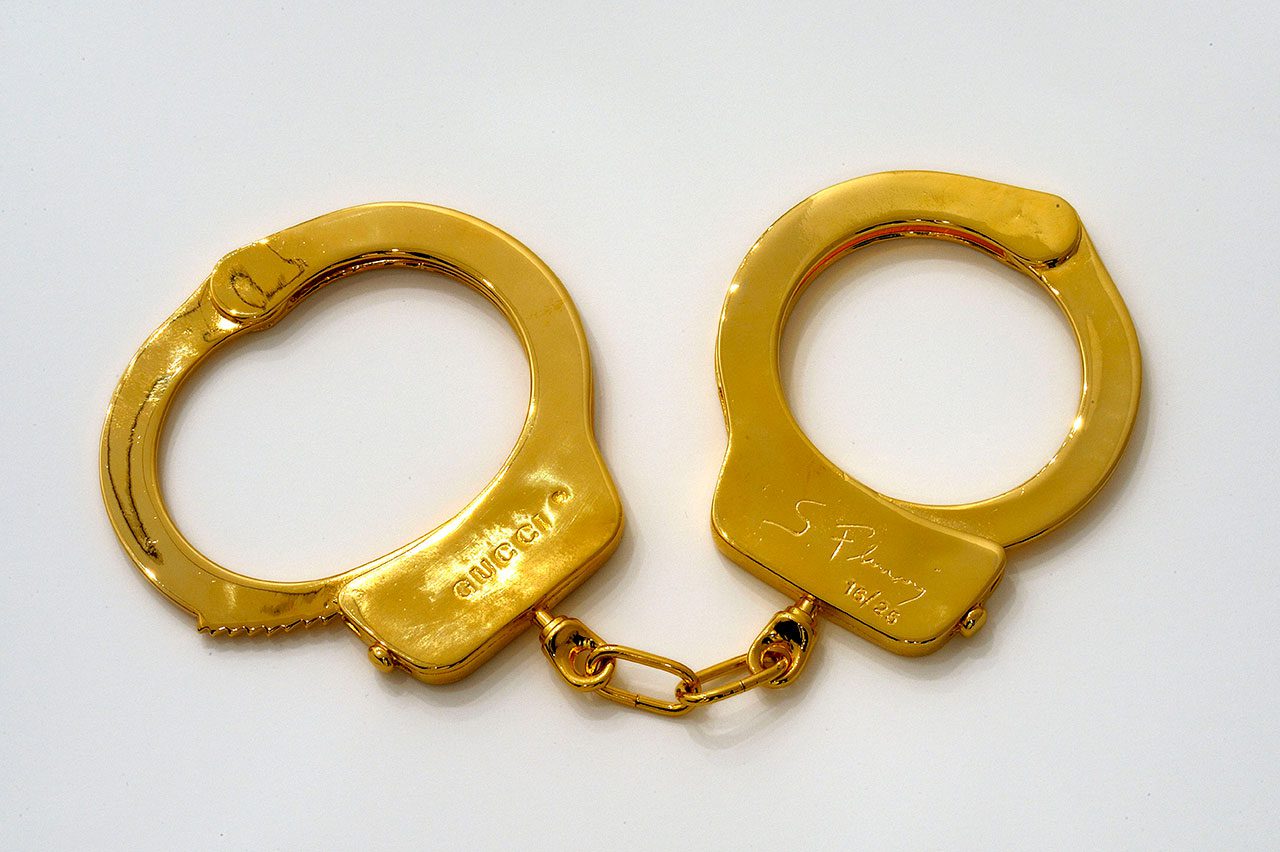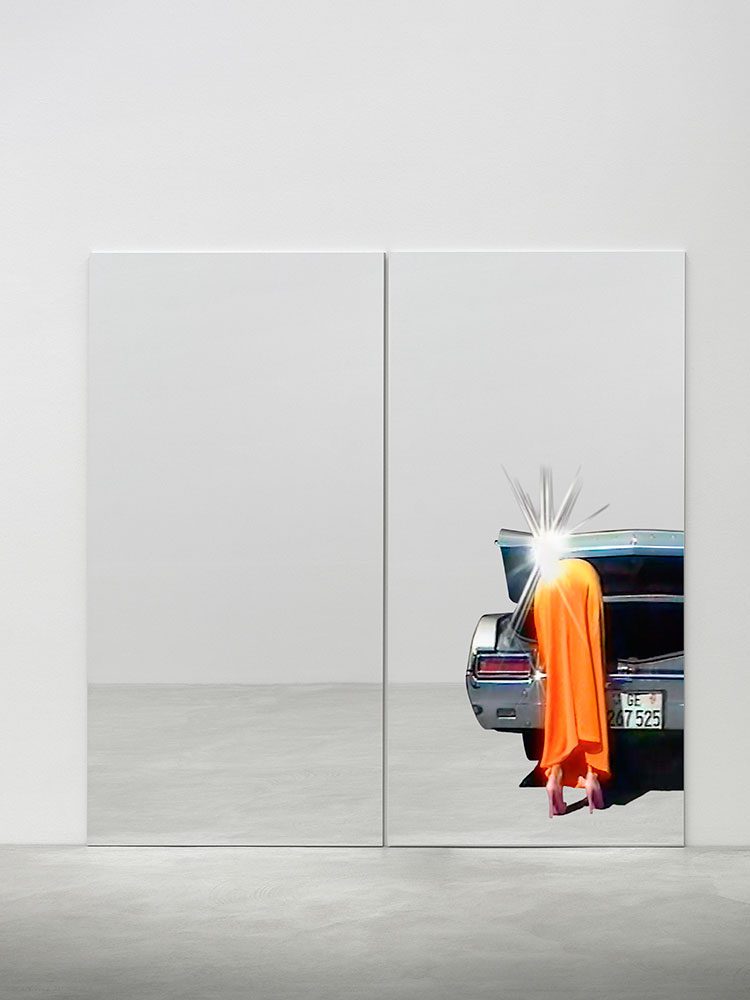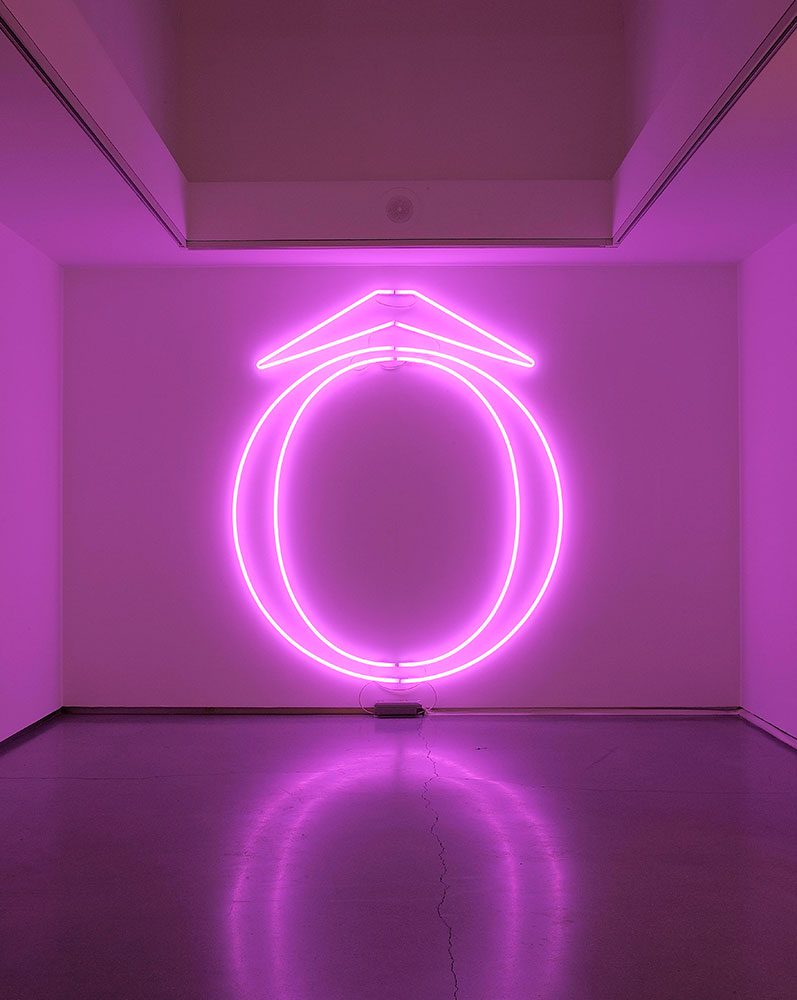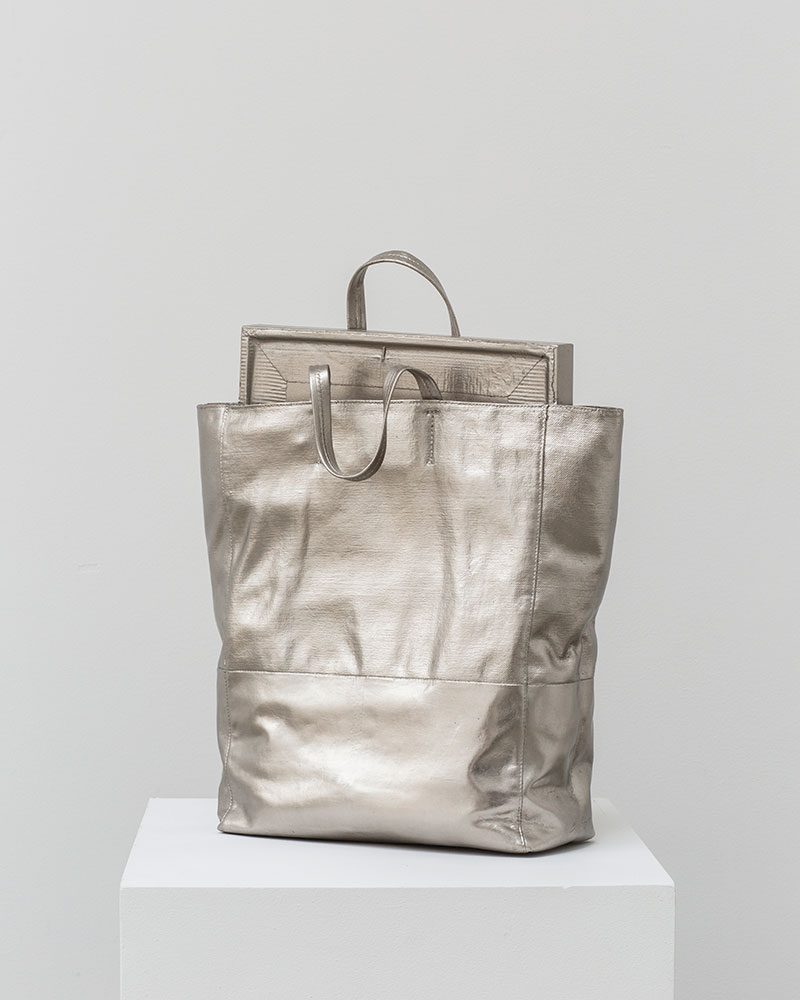ART CITIES: Paris-Sylvie Fleury
 Sylvie Fleury’s installation, sculpture, and mixed media work deals with our sentimental and aesthetic attachments to consumerist culture. Emerging in the 1990s, Fleury’s early “shopping bag” installations laid the foundations for a body of work that became as provocative as it is playful. Fleury heralded a new artistic trend by subverting the codes of consumption, creating an interplay between fashion and art, while interrogating the relationship between desire and fetishism.
Sylvie Fleury’s installation, sculpture, and mixed media work deals with our sentimental and aesthetic attachments to consumerist culture. Emerging in the 1990s, Fleury’s early “shopping bag” installations laid the foundations for a body of work that became as provocative as it is playful. Fleury heralded a new artistic trend by subverting the codes of consumption, creating an interplay between fashion and art, while interrogating the relationship between desire and fetishism.
By Efi Michalarou
Photo: Thaddaeus Ropac Gallery Archive
The exhibition “Sculpture Nails” retraces Sylvie Fleury’s profound contribution to how we understand the sculptural medium. On the ground floor of the gallery, the Swiss artist presents a selection of sculptures – both historic pieces and new works seen here for the first time – spanning her career of more than 30 years. On the first floor, visitors will discover an immersive space illuminated only by the glow of the artist’s celebrated neon works. The sculptures across typologies, materials and formats in the gallery’s ground floor space are brought together without hierarchy or chronology in a spirit of abundance and generosity. The presentation forms what Fleury describes as her reinterpretation of the traditional institutional sculpture gallery. Engaging with this established way of exhibiting sculpture, the artist transforms luxury commodities and brands – whether readymades or sculpted in bronze, brass or fibreglass – through their inclusion in it, prompting questions about their fetishisation, their valorisation and their consumption. Piles of magazines and makeup packaging and pairs of Alaïa shoes cast in bronze come together with a three-metre wide abstracted hairclip and a selection of the artist’s “Mushroom” works to form a wide-ranging survey of the artist’s sculptural vocabulary over the years. Employing materials and processes associated with Conceptualism, Minimalism and even Arte Povera, the sculptures on view in the exhibition draw not only on popular and consumer culture but also on art history. Fleury’s ‘tenderly irreverent’ references to the – often male – artistic canon become creative playgrounds, where she explores how their strategies can relate to and reformulate the questions central to her practice. While a 2001–02 yoga mat, cast in bronze with Gucci’s signature pattern in relief on its surface, encourages formal comparison with Carl Andre’s floor sculptures, the monumental diptych “Vanity Case” (2024), on view here for the first time, nods to Italian artist Michelangelo Pistoletto’s “Mirror Paintings”. Combining a mirrored ground with imagery from her early video work “Beauty Case” (1995), Fleury’s homage to Pistoletto reflects back the surrounding sculptures, as well as the viewer, bringing them into conversation with the artwork itself and epitomising the pervasive sense in the exhibition that dialogues and juxtapositions can create new meanings and surprising connections. The still from “Beauty Case” shows Fleury, back to the viewer, dressed in a gown and high heels, struggling to get her beauty case into the trunk of her 1967 Buick Skylark. The Buick has been an enduring motif in her work since the early 1990s, to which she returns periodically, casting an ironic eye on its conception as a symbol of masculinity. There is a potent feminist thread that runs throughout the exhibition, and through Fleury’s practice in its ensemble. Mountains of Slim-Fast milkshake powder tins sculpted in bronze – vanilla, café au lait, strawberry – create a play on ideas of excess, but also of restriction. The meal replacement drink, targeted at women who want to lose weight, is transformed by the artist into a comment on the unfulfilled promises of consumption in a context of ever-increasing pressures on women to achieve unattain- able beauty standards. Exhibited alongside them, Fleury’s “Gucci Handcuffs: (2001–2) create an ominous sense that we might be more trapped by the expanding possibilities of luxury and beauty than we are liberated. The neons on view, meanwhile, encompass two decades of Fleury’s investigation of the medium. Like many of her sculptures, they form an art-historical gesture, drawing on Conceptual artist Joseph Kosuth’s principle that ‘art is making meaning’ and relating it to slogans and jingles, provocatively harnessing it to engage with and call into question the mechanics of the beauty industry. The names of perfumes – Dior’s Hypnotic Poison, Lancôme’s Ô and Calvin Klein’s Eternity Now – are instantly recognisable through their distinctive fonts. Other neons are imperatives – a group from 2001–02 tells us to Exfoliate, Hydrate, Shield, Purify like a skincare brand might, while a 2005 work glows BUY ME – forming a deconstruction of the messaging of an industry that impels women to consume by playing it at its own game. Alongside them, an all-capital-letter YES TO ALL – perhaps the artist’s best-known neon message, notably installed in recent years on the facade of the Petit Palais, Paris (2019) and above the entrance of the Pinacoteca Agnelli, Turin (2022) – references the common computer command. The work captures the frenzy of stimuli and the speed and zeal of consumption in the post-digital world, bringing them to a halt, poignantly suspended in the dim space like guiding stars in an era and environment of excess. Across diverse bodies of works, Fleury continually returns to a treatment, with cynicism but always a touch of fondness, of the trappings of our consumer society and our related fixations and aspirations. This duality is carried throughout Sculpture Nails, which invites the visitor into the margin between a celebration of life and things and a contemplation of society’s darker underbelly.
Photo: Sylvie Fleury, Gucci Handcuffs, 2001-02, Goldplated metal, 23 x 9 cm (9,06 x 3,54 in), 300 g, © Sylvie Fleury, Courtesy Thaddaeus Roppac Gallery Archive
Info: Thaddaeus Ropac Gallery, 7 Rue Debelleyme, Paris, France, Duration: 11/1-22/2/2025, Days & Hours: Tue-Sat 10:00-19:00, https://ropac.net/



